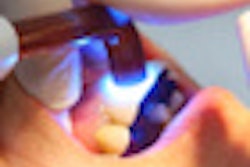A study evaluating the A2 shades of various types and brands of resin composites determined that each one of them had perceptible color changes after polymerization and subsequent testing. Since those changes could cause aesthetic problems clinically, the researchers recommend taking this into account for shade selection (Journal of Restorative and Aesthetic Dentistry, June 2011, Vol. 23:3, pp. 179-188).
The research team from Ege University in Izmir, Turkey, sought to determine if color differences occurred before and after polymerization, as well as after one month of storage in water. The researchers also examined the correlation among the color changes in Commission on Illumination L*, a*, and b* values after polymerization and after one month of storage in water.
The following light-curing resin composites were tested:
- One submicron-hybrid: Spectrum TPH3 (Dentsply)
- One nano-filled: Filtek Supreme XT (3M ESPE)
- Three microhybrids: Filtek Z250 (3M ESPE), Esthet X (Dentsply), and Gradia Direct (GC)
- Five nanohybrids: Ceram X (Dentsply), Clearfil Majesty Esthetics (Kuraray), Premise (Kerr), Tetric Evo Ceram (Ivoclar Vivadent), and Tetric N Ceram (Ivoclar Vivadent)
The specimens were prepared as disks 12 mm in diameter and 2-mm thick. Measurements were performed before and after polymerization and after one month of storage in water using a contact type dental spectrophotometer. Color changes after polymerization were observed in all resin composites. After storage in water, unacceptable ranges of color change were only observed in Clearfil Majesty Esthetic and Gradia Direct.



















